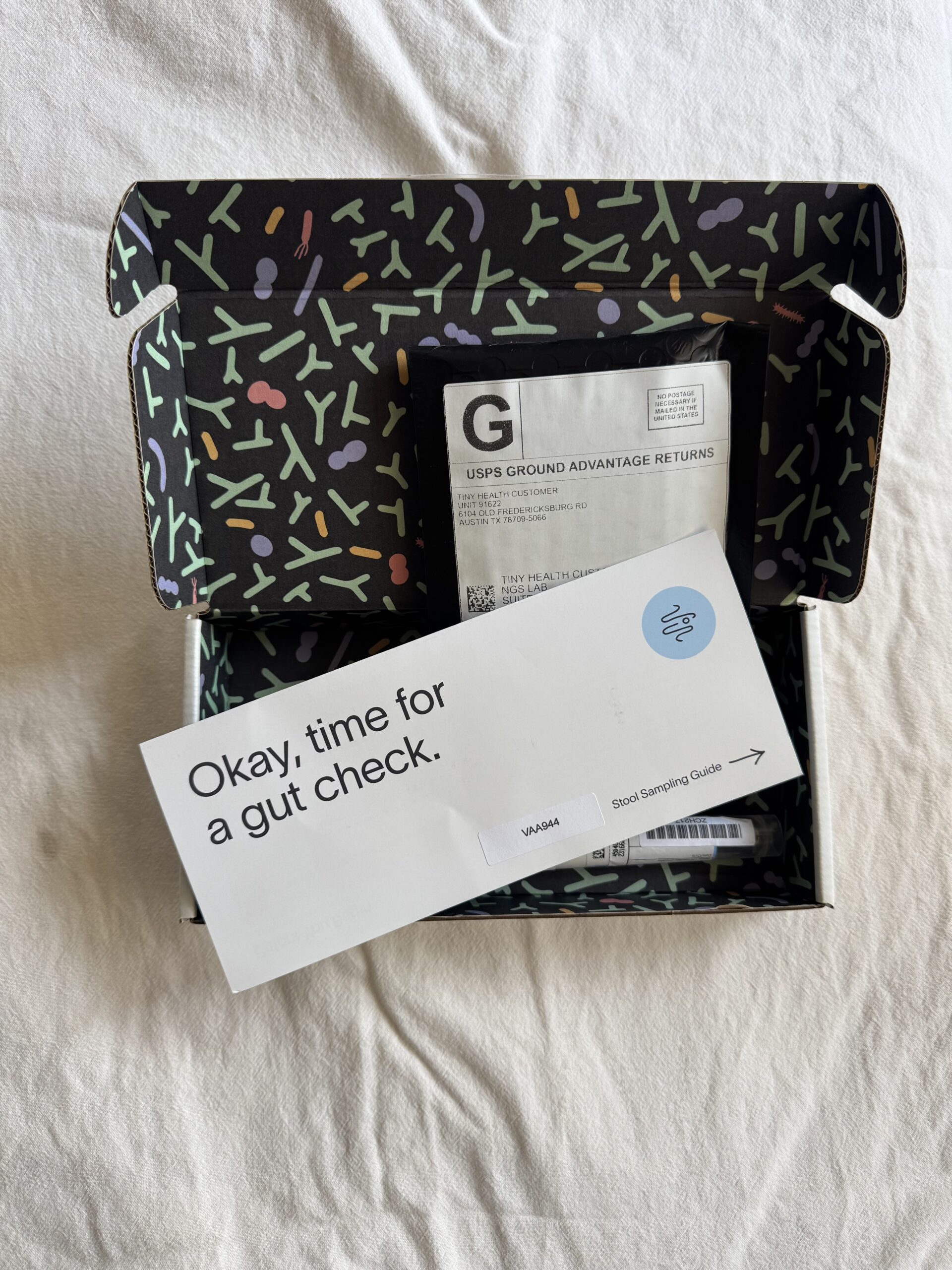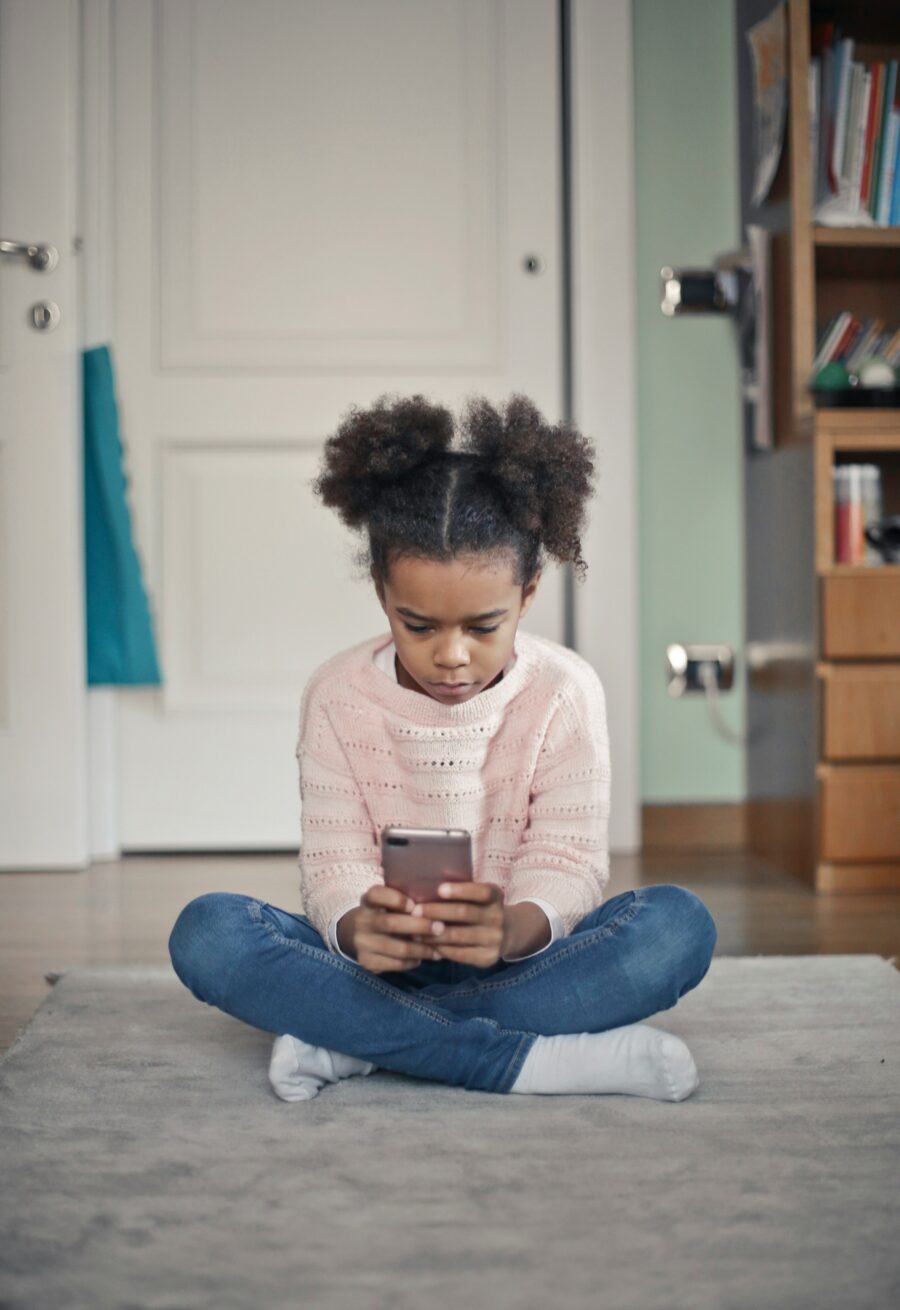
5 Best Smartphones For Kids
Good Gear editors endorse products we’ve personally researched, tested, and genuinely love. Learn more about our methodology and business model here.
“She’s only 10. Does she really need a phone?” I asked my husband. The answer was, unfortunately, “yes.” Our eldest daughter was in her second year of an intense afterschool arts program, apart from us for long periods in the afternoons and evenings four days a week. We wanted, no, needed a way to stay connected to her. That said, we weren’t ready to fully hand over the keys to the web. 🔑
A recent survey found that most kids get a cell phone around age 13. Many modern parents with active ‘tweens find themselves between a rock and a hard place — wanting to offer the tools for staying connected, without opening a Pandora’s box of complications. As parents in that exact situation, we knew we couldn’t keep technology out of our daughter’s life forever so we decided to focus instead on finding options that offer the appropriate protection for her age.
What to consider when shopping for a phone for your kid?
When purchasing a smartphone for your kid, the physical device you get is less important than the safeguards preinstalled or offered within the phone. When shopping hardware, you’ll usually encounter a basic model of a familiar adult smartphone. The difference comes in the level of software and operating systems that protect young users, and sometimes allow parents to monitor the phone’s use as well as their child’s whereabouts through a parent portal.
For all of the options we’ve reviewed below, you’ll purchase the device of choice and then choose a plan or option for a monthly fee based on the features offered. Most offer unlimited talk and text options. Some offer the ability to take, send, and accept photo text messages. This feature may not be suitable for every child, but it has come in handy a time or two, i.e., when ours forgot homework forms and we could send her a pic. There are also options to move from basic plans to advanced plans as your child gets older.
Our criteria
In shopping for a phone for my daughter, I researched dozens of kid-friendly smartphones. Below, I’ve selected the top options that meet my criteria — all of the picks below are easy to use for parents and children alike, offer adequate protections, and are affordable. Above all, I focused on privacy and security, which is paramount when a smartphone is put in young hands. No matter what option you choose we suggest keeping top of mind what’s best for you and your child. Happy browsing!
1. Troomi
Best For | Function and affordability
Age Range | 9+
Features | Text message and location monitoring, vetted app downloads, access to basic apps, safe web access, upgrades as your child gets older
Price Starting At | $199.95 for the basic model plus a monthly plan at $19.99
Type of Phone | Samsung A-15 5G
The Troomi offers the perfect mix of function, features, and affordability and was the best fit for our family. Each of Troomi’s three plans offers parent portal access, which includes location monitoring and text monitoring – with the option for parents to read the actual content of texts. The Troomi portal also gives parents access to approve contacts and designate emergency contacts. All plans have essential apps such as a calculator, camera, and weather, while the most advanced allows safe web access and Troomi-vetted app downloads. The phone is easy to link to the parent portal, and is a breeze to navigate. Troomi gets points for sustainability since this phone can last through one’s mid-to-late teens!
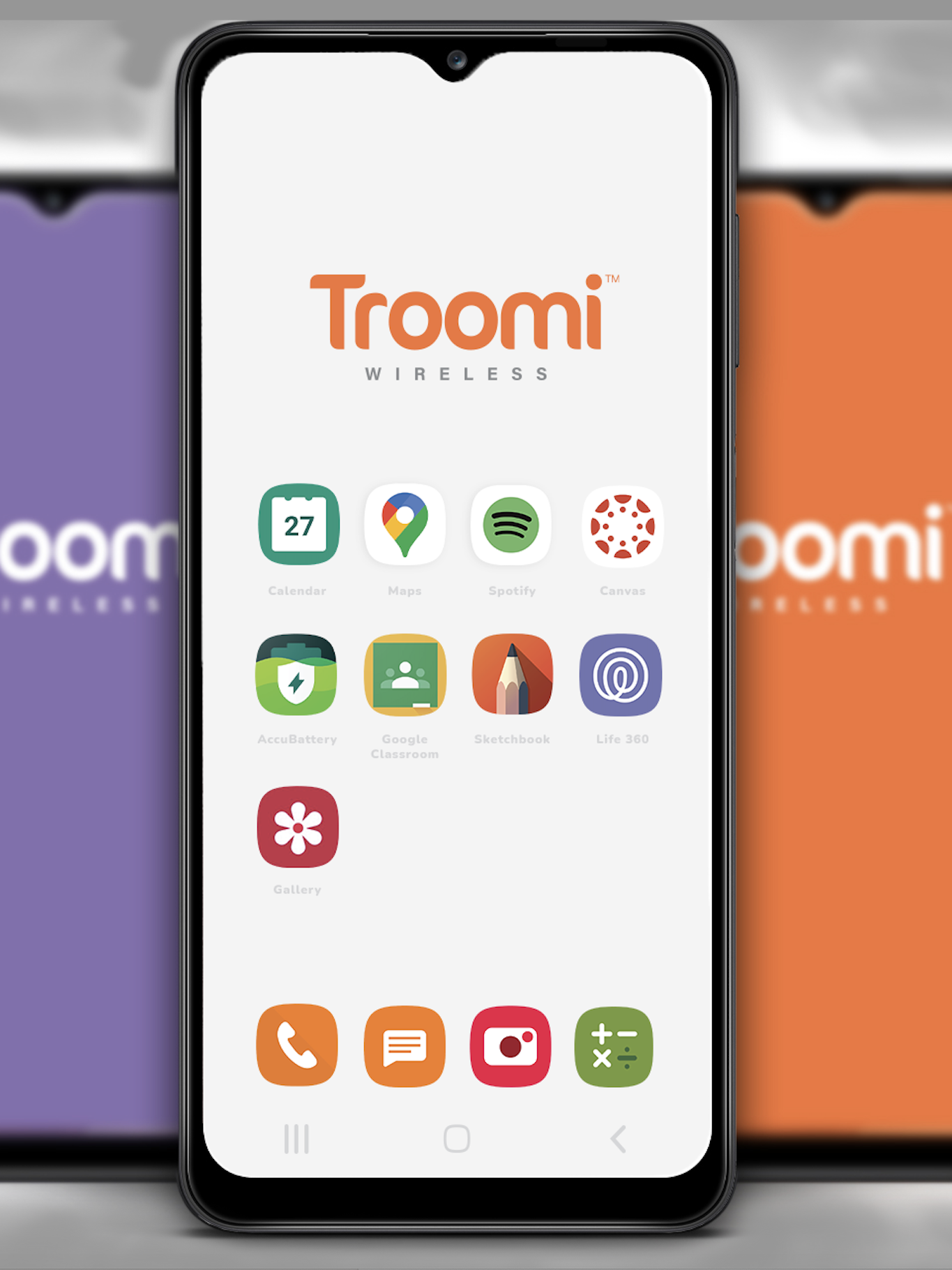
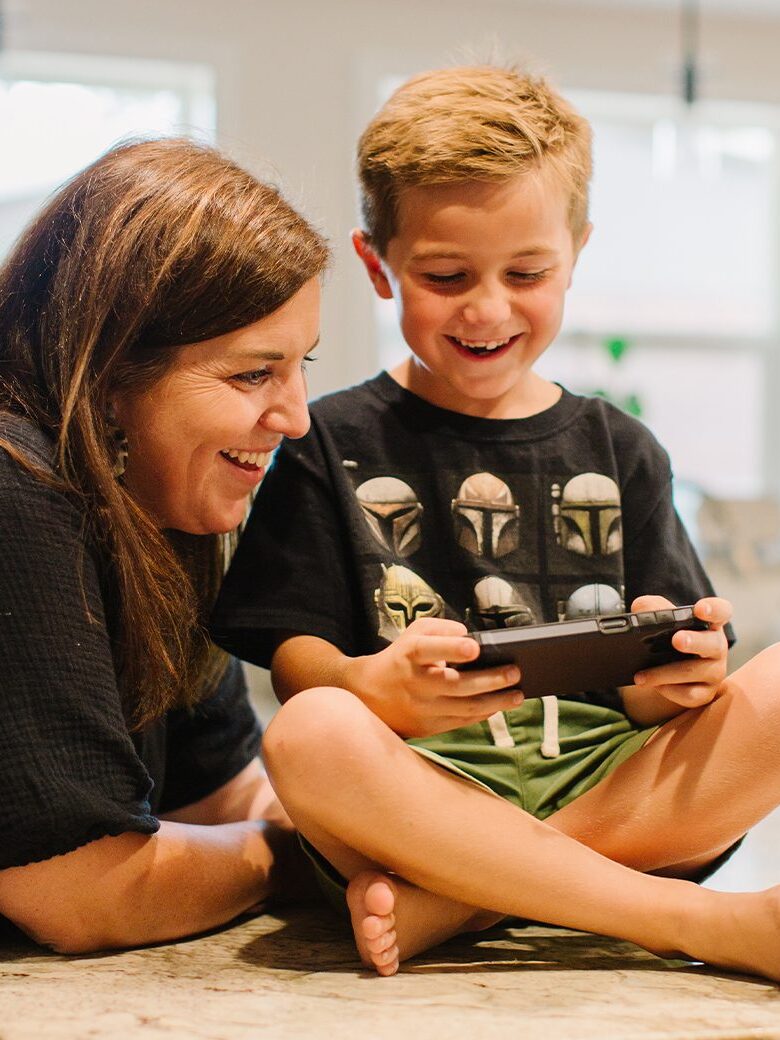
2. Gabb Phone
Best For | Music lovers
Age Range | 9–15
Features | Spam blocking, vetted music streaming and app downloads, digital storage backup
Price Starting At | $149 for the phone plus a monthly plan that begins at $24.99. Add music service at $5.99/mo.
Type of Phone | ZTE
Gabb calls it “the perfect first phone.” One of the best features of this program seems to be its Gabb Guard™ which blocks more than 90% of suspected spam calls. Like the Troomi, Gabb’s interface offers several plan options so it can grow with your child (if you have an older teen, you may consider upgrading to the Gabb Pro 3). The Gabb Phone runs on the Gabb operating system and offers digital storage backup – a significant plus if your child likes to take pictures. With Gabb’s advanced plan, kids can be granted parental access to third-party apps that Gabb has vetted for safety and security. However, the system still denies web browsers and social media.
The Gabb Phone is currently the only phone on our list to offer access to a music streaming app that is said to host the most extensive kid-safe music library. Gabb music offerings have no explicit lyrics or inappropriate subject matter — plus these phones are Bluetooth-capable so your child can connect to headphones and speakers. 🎵
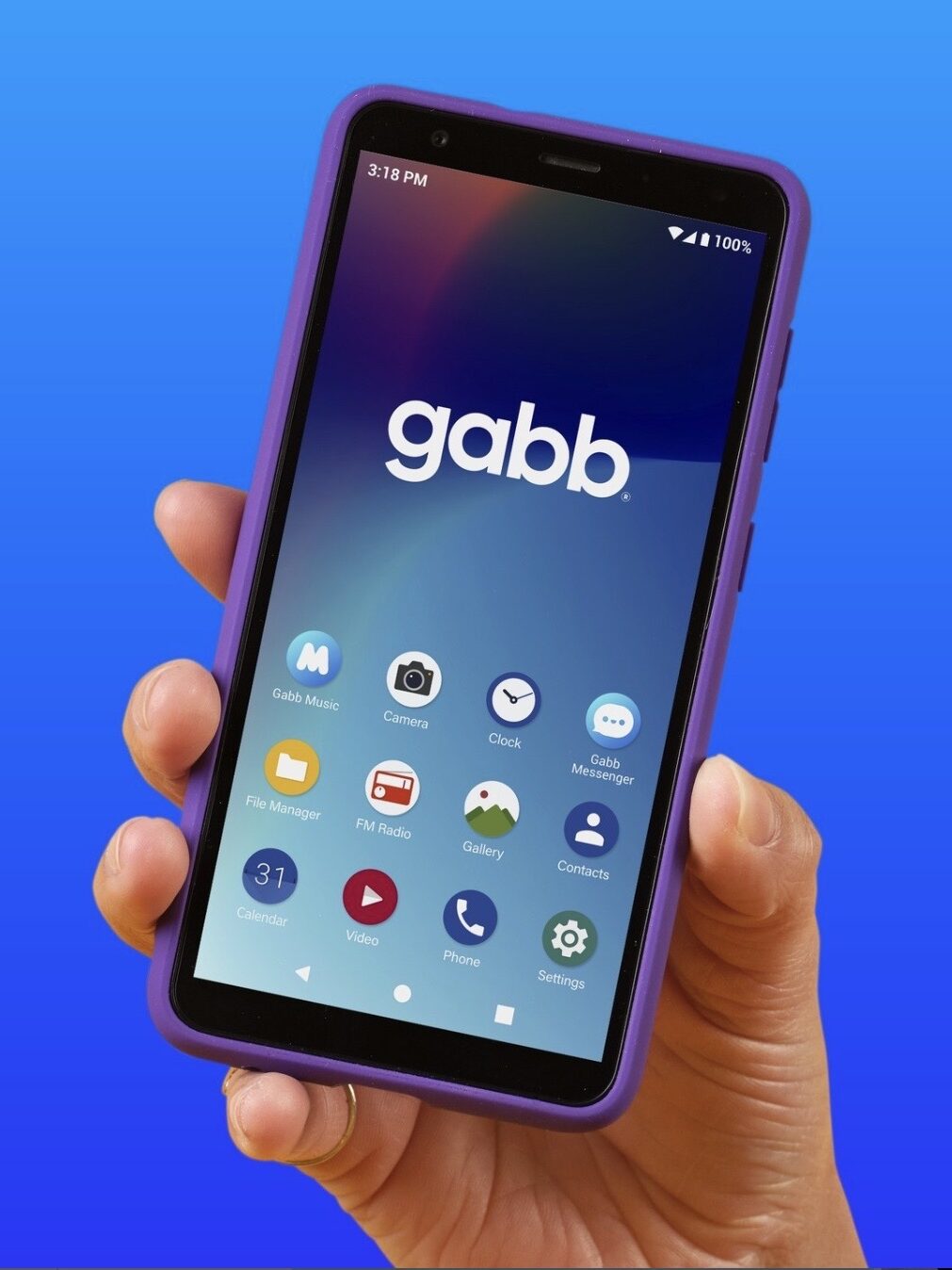
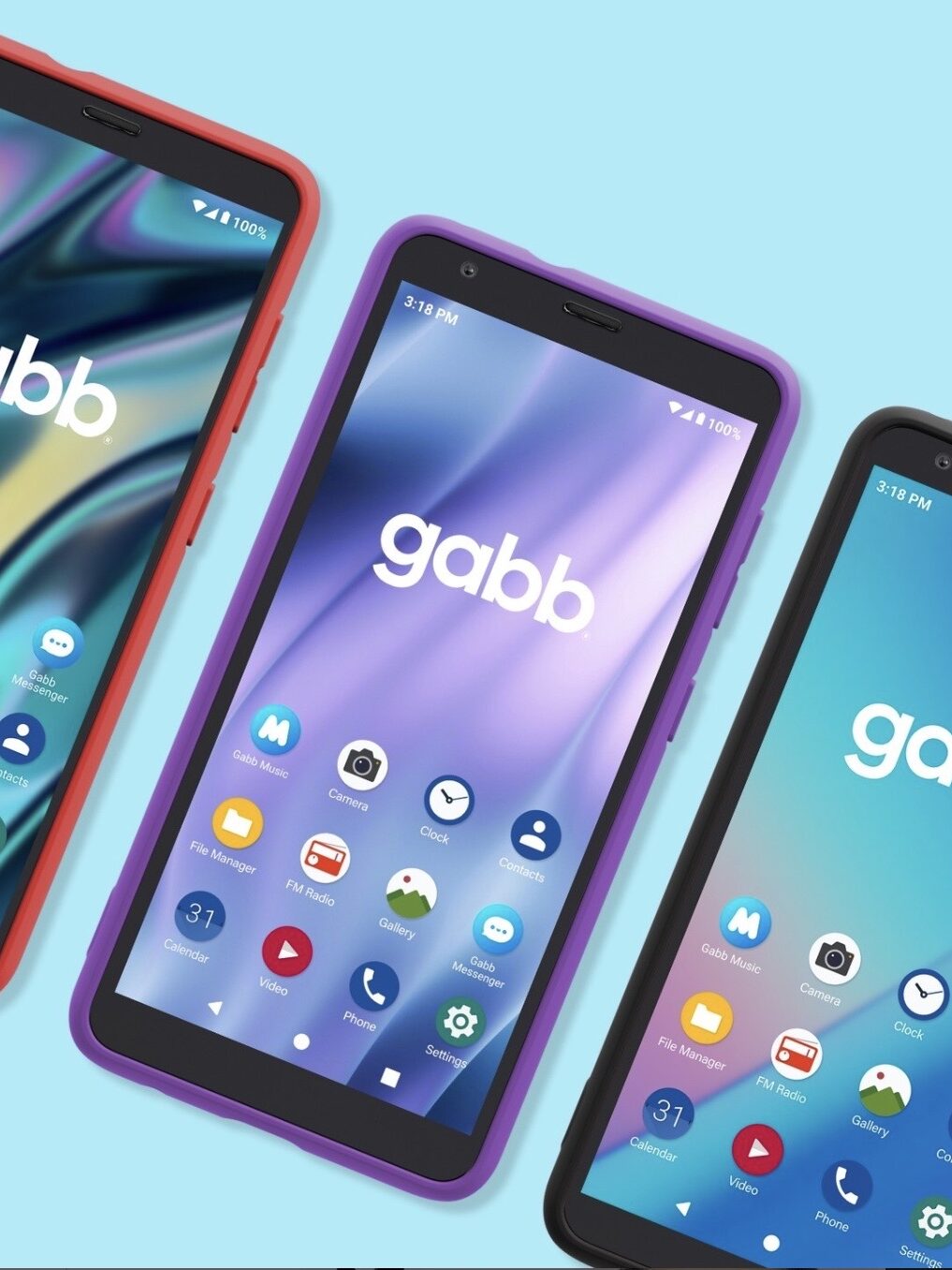
3. Pinwheel Plus3
Best For | Teaching independence
Ages | 10+
Features | Carrier freedom, reduced rate for additional lines, phone recycling program
Price Starting At | $259 for a preowned phone plus $14.99 per month for Pinwheel portal
Phone | Samsung Galaxy A14 5G
Pinwheel gives parents access to a comprehensive caregiver portal to manage and monitor phone activity remotely. Unlike the other options listed here, Pinwheel does not offer a monthly cellular service. Instead, you purchase an unlocked Pinwheel phone preloaded with the Pinwheel software and then pay for a lower-cost subscription that gives access to a parent portal. This allows you to choose your carrier as long as the provider is compatible with the model of phone you get, making it easy for those already on a family plan to streamline their family’s cell service. None of the Pinwheel plans allow access to browsers or social media, though kids can download vetted apps with parental permission.
Pinwheel is great for creating checklist routines and digital wallet options to teach money management — plus your child can access the family Amazon music account. Consider this a smartphone with training wheels!
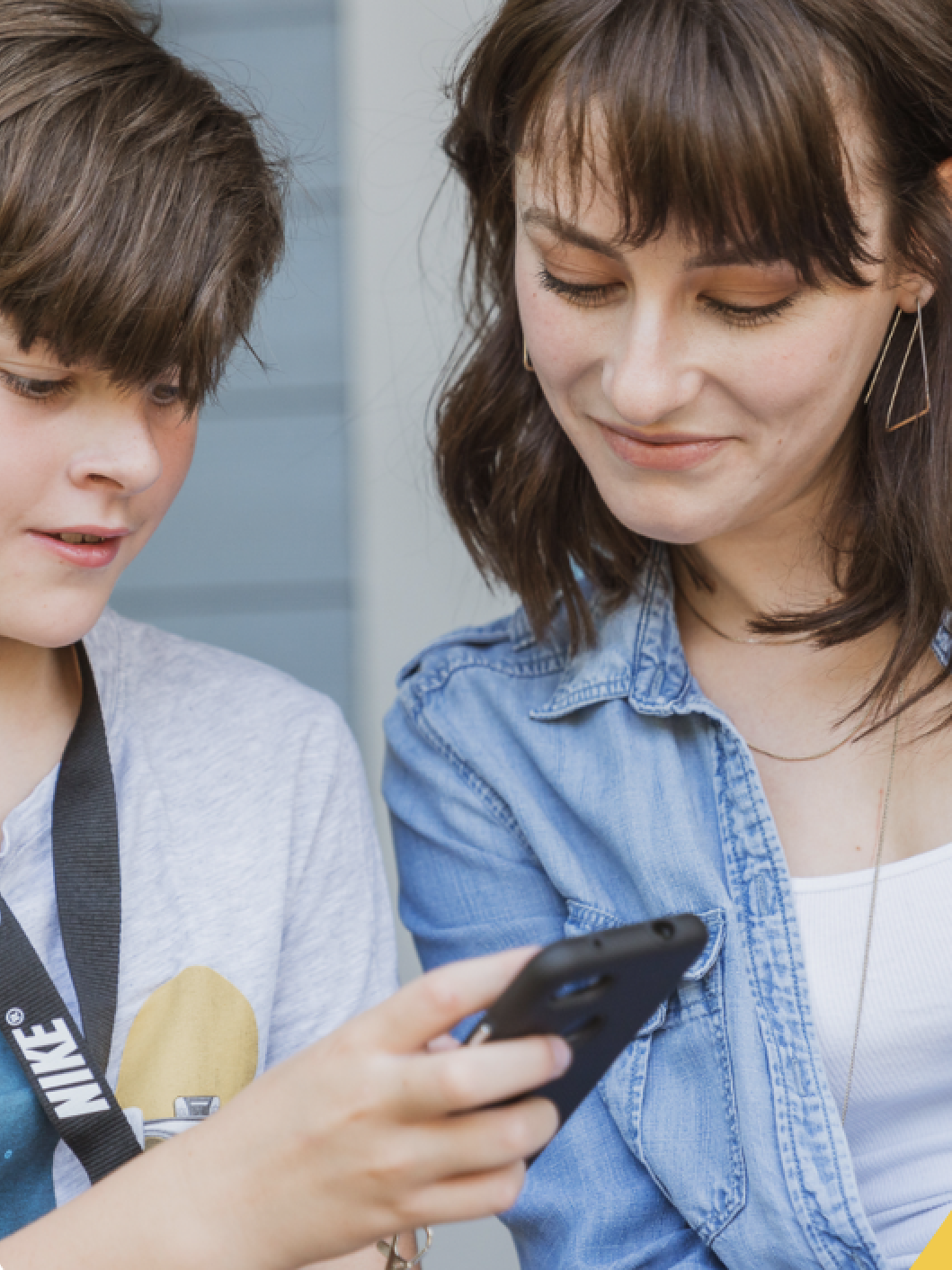
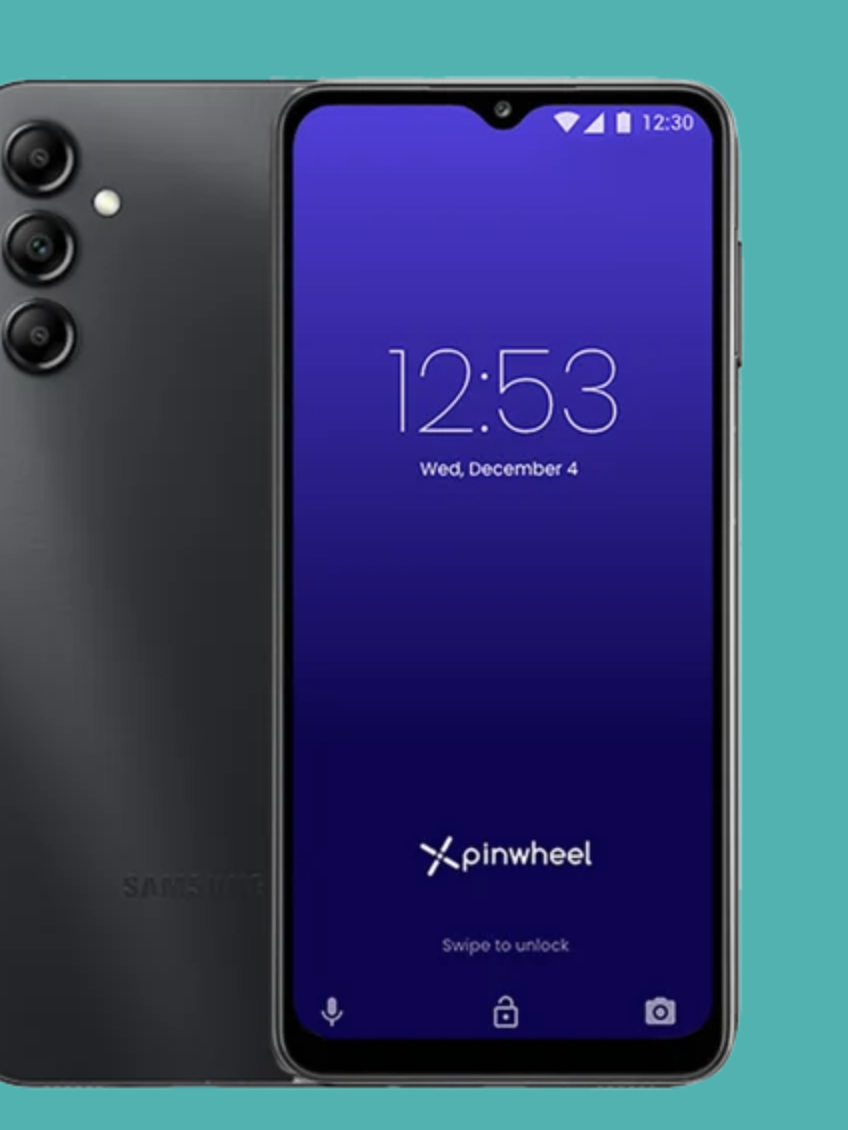
4. Bark
Best For | AI-powered electronics protection
Ages | 6–15 (older may be best)
Features | Data analysis, freedom with downloads, unlimited talk and text
Price Starting At | $199 for a phone with no contract. The phone is free if you commit to a 2-year contract with monthly plans starting at $29.00.
Type of Phone | Samsung Galaxy A13
Founded by a former Twitter employee and father looking for ways to keep his two kids safe while also respecting their privacy, Bark was designed as a holistic AI monitoring system for a host of kids’ electronics, not just phones. The Bark system allows a lot of freedoms that the other options on our list don’t — instead of blocking everything potentially dangerous, Bark uses AI to scan texts, emails, social media, and apps for digital dangers and then sends parents alerts if any concerning items that pop up. We recommend Bark for responsible ‘tweens and teens whose parents don’t want to monitor them so closely. The Bark phone contains a built-in web browser with a strong content filter, and, as a parent, you can approve any apps before their download. The parent portal works with iPhone or Android operating systems, and parents can lock the phone remotely, send alerts, set screen time limits, and gain insight into how often their child uses the phone.
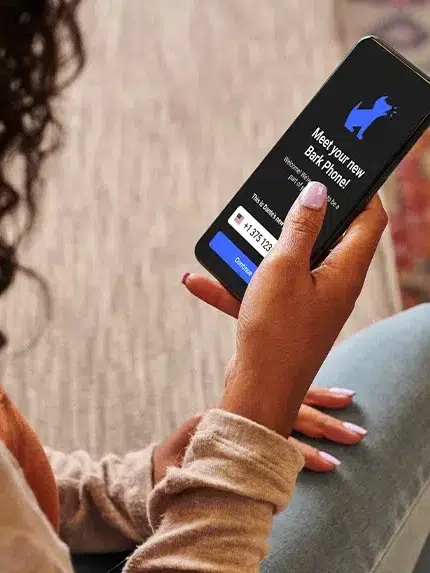

5. Gizmo Watch 3
Best For | Never losing a phone!
Ages | 3–11
Features | Camera for video calls, GPS tracking, rugged and waterproof
Price | $149.00 for the phone plus monthly plan through Verizon
Type of phone | Smartwatch
The Gizmo watch is an excellent option for those parents with younger kids who want to communicate but would like to avoid a lost or broken phone. This watch is IP68-rated, meaning it’s durable enough to be worn while swimming at a friend’s house or even in the shower. The parent portal is through an app, and users say these watches are relatively simple to set up. The Gizmo 3 allows kiddos to communicate with friends and family through prewritten text messages, video calling, and messaging, but no downloads are allowed, which means no outside apps. This watch battery lasts for five hours of talk time before needing to be recharged, and longer when not on a call. There is also an SOS button that dials the programmed emergency contact. This device is super fun for kids since it comes preloaded with different watch faces, games, a step counter, and even a very basic camera function.
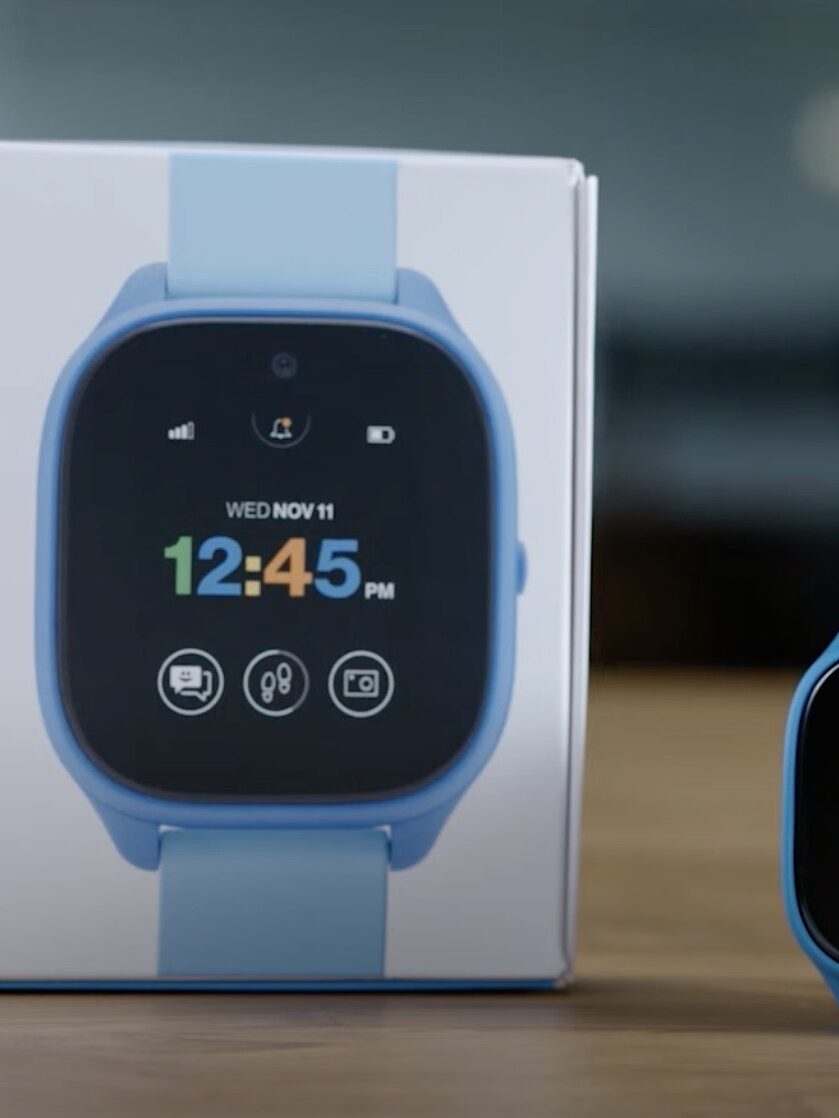
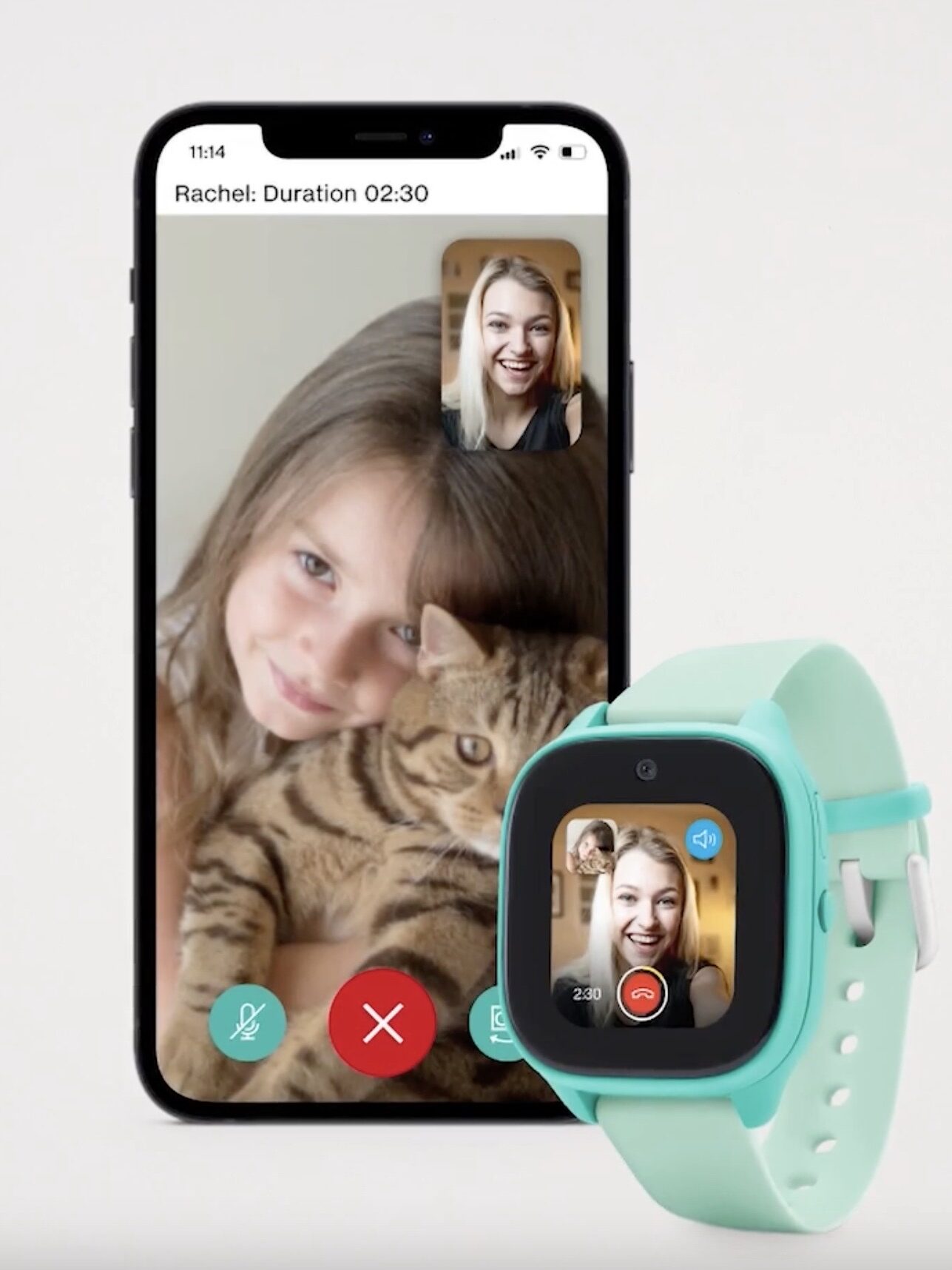
Randi Donahue is a freelance writer with a master’s in journalism from Emerson College in Boston. Now based in Florida, she has two daughters and considers herself hyper-conscience when it comes to household consumption, researching every item with intense scrutiny before purchasing. You can see more of her work at www.randidonahue.com.

